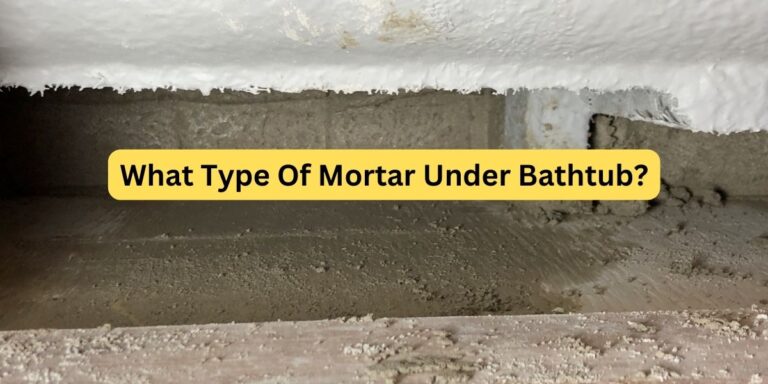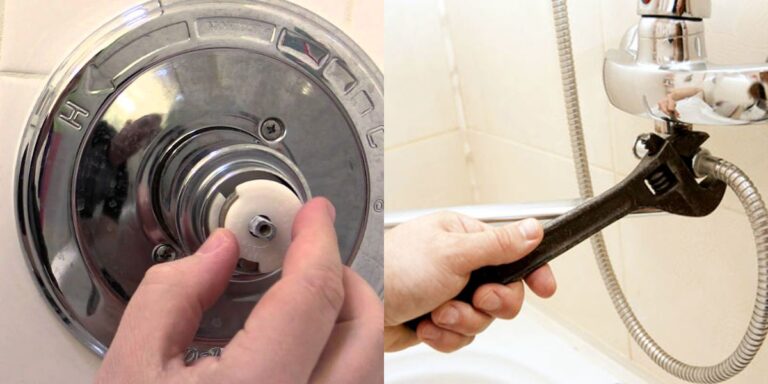How are Bathtubs Measured? An In-Depth Guide
Bathtubs have evolved from luxury items to essentials for home hygiene and rest and relaxation. Finding a beautiful tub is important, but the tub’s dimensions are just as critical. By understanding standard bathtub dimensions, you can pick the best tub for your bathroom, guarantee a pleasant soak, and maybe even avoid some aggravation during the installation process.
Although it may seem inconsequential, knowing how to accurately measure a bathtub can lead to a more pleasurable bathing experience. It gives you the freedom to tailor the dimensions of your tub to your bathroom, striking the perfect balance between form and function, and ensuring that your demands are met.
How are Bathtubs Measured?
To measure a bathtub, one must look at three key aspects: length, width, and depth. The process can vary depending on the type of tub, such as a freestanding, alcove, or corner bathtub. However, the basic principles remain the same.
- Length: This is measured from one end of the tub to the other, along the longest side.
- Width: The width is the distance from one side to the other at the widest point.
- Depth: Depth is measured from the base of the tub to the top of its edge. However, remember that the actual water depth will be less than this, considering the overflow drain’s height.
Steps to Measure Your Bathtub
Step One: Equip Yourself with a Proper Measuring Tape
The first and perhaps the most essential step in measuring your bathtub is to acquire a measuring tape that’s long enough to measure the entire length of the tub. A tape measure that extends up to at least 6 feet should generally suffice. The importance of this tool cannot be overstated, as it will provide the precise measurements you’ll need to find a new tub that will fit perfectly in your bathroom.
Step Two: Determine the Length of the Bathtub
Measuring the length of your bathtub is a straightforward process. The key here is to measure along the top edge of the tub from one end to the other. Ensure the measuring tape is aligned accurately at the very edge of both ends. While doing this, take care to maintain the tape’s levelness to ensure that your measurement is as accurate as possible.
Step Three: Gauge the Width of the Bathtub
After measuring the length, the next aspect to gauge is the width of the bathtub. To do this, extend the measuring tape from one side to the other at the widest point of the tub. Similar to measuring the length, make sure that the measuring tape runs parallel to the floor for an accurate measurement.
Step Four: Measure the Depth of the Bathtub
The depth of a bathtub is another crucial dimension to measure, especially if you prefer soaking baths. To accurately measure the depth, run the tape from the very bottom of the inside of the tub up to the top edge. This dimension is typically less than the length or width but is equally significant as it can affect your comfort during baths.
Step Five: Record and Keep Your Measurements
After diligently measuring each dimension, it’s vital to record these numbers accurately. Having a clear and handy record of your bathtub measurements is essential when you’re shopping for a new bathtub. This will save you time and the possible inconvenience of buying a tub that doesn’t fit your bathroom’s space.
Common Bathtub Sizes
While bathtubs can come in a variety of sizes, some common dimensions tend to dominate the market. Here’s a brief rundown of common sizes for different types of bathtubs:
| Type of Bathtub | Common Dimensions (in inches) |
|---|---|
| Alcove | 60 x 32 x 18 |
| Freestanding | 60 x 30 x 19 |
| Corner | 60 x 60 x 22 |
| Soaking | 60 x 32 x 24 |
| Whirlpool | 60 x 32 x 21 |
Remember, these are just common sizes. Bathtubs can come in a variety of dimensions to suit different needs and bathroom layouts.
What to Consider When Measuring Bathtubs?
While measuring a bathtub may seem straightforward, there are a few additional factors you should consider:
Space for Installation
When selecting the perfect bathtub, it’s crucial not to overlook the practicalities of the installation process. In addition to measuring the length, width, and depth of your desired bathtub, you also need to assess the available space for installation. Remember, your bathtub isn’t a standalone item – it needs to integrate seamlessly with the existing plumbing and structure of your bathroom.
For example, you’ll need extra space for plumbing access and installation. This might include clearance for doors to open, space to maneuver the tub into position, and adequate room for any necessary plumbing modifications. A professional plumber or bathroom contractor can provide invaluable guidance in this area.
Body Size and Comfort
Bathtubs are made for relaxation, and that means your comfort is paramount. The size and shape of your bathtub should suit the size and bathing habits of the person who will use it most. For instance, a taller person may appreciate a longer tub, while a shorter person might prefer a shallower one.
Think about how you like to relax in the tub. Do you enjoy a deep soak, or do you prefer to recline with a good book? Consider things like back support, armrests, and slip-resistant surfaces. Remember, the tub’s measurements are not just about fitting the tub into your bathroom, but about fitting you comfortably as well.
Type of Bathtub
There are several types of bathtubs available, each with their own specific measurements and installation requirements. For example, freestanding tubs are incredibly stylish and can act as a centerpiece for your bathroom. However, they typically require more floor space than other models.
On the other hand, alcove bathtubs, designed to fit into a three-walled enclosure, might take less space but may not provide the same level of aesthetic appeal. Corner tubs can maximize space in smaller bathrooms but also need specific spatial allowances for a proper fit. Each bathtub type comes with its unique set of requirements and considerations.
Water Heater Capacity
It might surprise you to learn that your choice of bathtub could impact your water heater’s performance. A larger bathtub naturally requires more hot water, which means your water heater needs to be up to the task.
Before choosing a larger tub, consult with a plumber or HVAC specialist to ensure your water heater has the necessary capacity. If it doesn’t, you might have to consider upgrading your water heater as part of your bathroom renovation. It’s important to factor this into your budget and planning.
Conclusion and Key Takeaways
Understanding how bathtubs are measured is crucial when purchasing a new tub or replacing an old one. Here are the key takeaways:
- Bathtubs are measured by length, width, and depth.
- Always measure your space for installation before purchasing a tub.
- Consider the comfort, type of bathtub, and water heater capacity before finalizing your choice.
- Bathtubs come in various sizes, and while there are common dimensions, always check the specifics before making a purchase.
FAQs
Are bathtub measurements from the inside or outside?
Bathtub measurements are typically taken from the outside edges to account for the entire unit, including any surrounding flanges or edges.
How do you measure for a bathtub replacement?
To measure for a bathtub replacement, you’ll need to determine three things: the length from wall to wall, the width from back to front, and the depth from top to bottom. Don’t forget to include any flanges or edging in your measurements!
How do you measure the size of a tub?
Measuring the size of a tub is done by determining its length, width, and depth. Start by measuring the full length and width from outer edge to outer edge, and then measure the depth from the top edge down to the base of the tub. This will give you a full set of dimensions for your tub.
Read more:

Amanda has been designing and installing bathtubs for over 15 years. She first got interested in the bathtub industry while working as an interior designer right after college. During her years as a designer, Amanda was frustrated by the lack of high-quality, unique bathtub options for her clients. This passion led her to start her own bathtub website in 2009.







